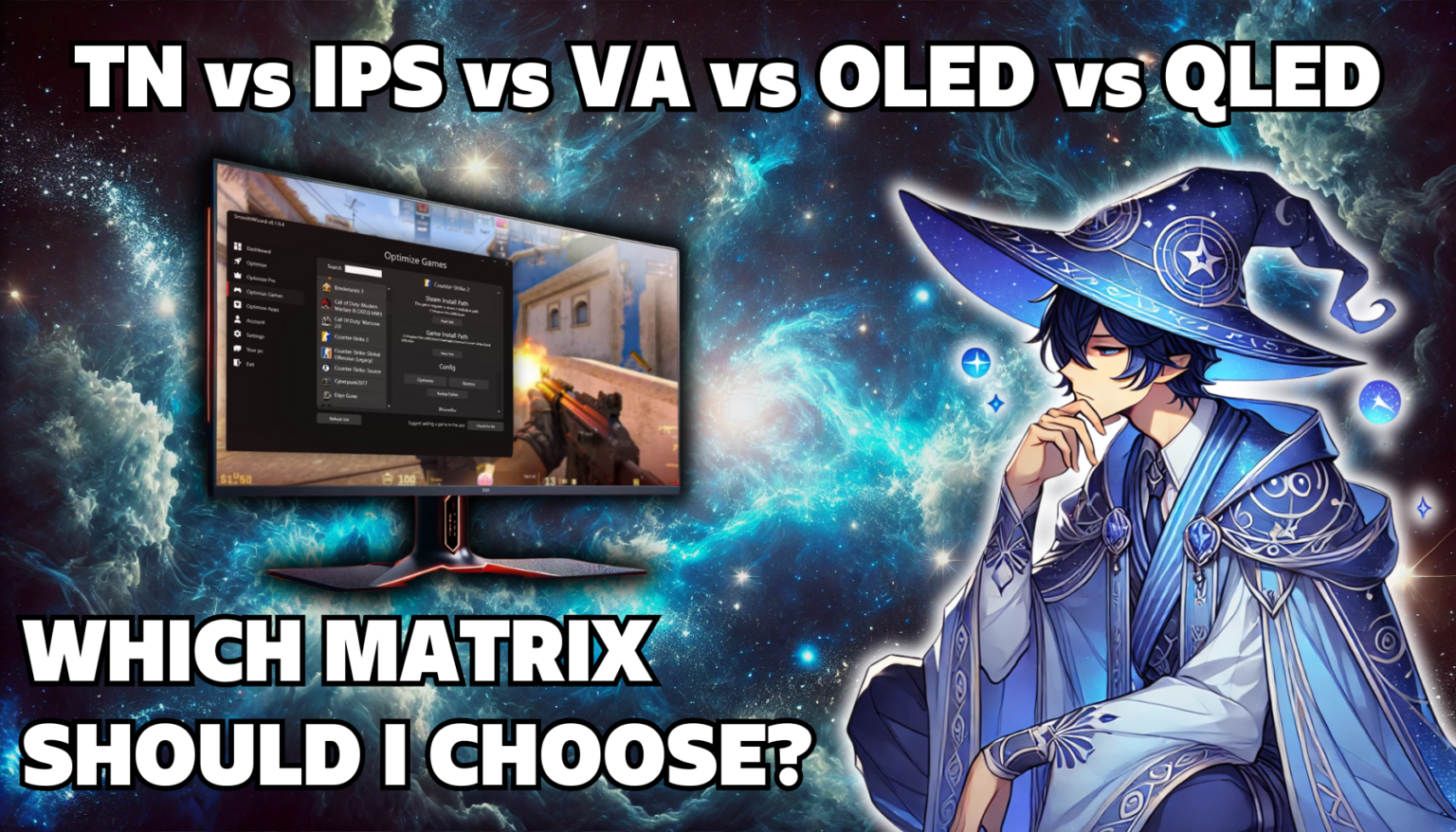Comparison of TN, VA, IPS, OLED, and QLED Panels – How to Choose the Best Panel for Your Monitor and TV?
TN Panel (Twisted Nematic) – Fast Response Time and Affordable Price
TN Panel Characteristics:
Panel TN are a display technology offering very fast response times and are among the cheapest options available on the market. Although it’s a popular choice among gamers, the image quality remains lower compared to other technologies.
Advantages of TN Panels:
Fast response time – perfect for gamers, where smooth image motion is essential.
Low price – the cheapest panels available in budget monitors.
Disadvantages of TN Panels:
Poor viewing angles – image quality degrades when viewed from the side.
Low color quality – less saturated colors compared to IPS and OLED panels.
Ideal for: Gamers looking for an affordable but efficient technology.
VA Panel (Vertical Alignment) – Deep Blacks and Better Contrast
VA Panel Characteristics:
Panel VA offer better viewing angles and higher contrast than TN panels, making them a great choice for TVs and multimedia monitors. The main feature of VA panels is deep blacks and clearer contrast, improving image quality in darker scenes.
Advantages of VA Panels:
High contrast – excellent black quality, ideal for watching movies.
Better viewing angles – better image quality compared to TN panels.
Disadvantages of VA Panels:
Slower response time – may be less suitable for gamers.
Weaker color reproduction – compared to IPS and OLED panels.
Ideal for: Those seeking good contrast and image quality in darker scenes.
IPS Panel (In-Plane Switching) – Excellent Color Reproduction
IPS Panel Characteristics:
Panel IPS offer the best color quality and wide viewing angles, making them an ideal choice for professional graphic work, photo editing, and movie watching. IPS panels also provide more natural color reproduction.
Advantages of IPS Panels:
Excellent color reproduction – the image is vibrant, natural, and full of details.
Wide viewing angles – colors and brightness remain stable from any angle.
Disadvantages of IPS Panels:
Lower contrast – compared to VA, IPS panels offer weaker black quality.
Higher price – a more expensive option compared to TN and VA panels.
Ideal for: Professionals working with image editing, graphic designers, and movie enthusiasts.
OLED (Organic Light Emitting Diode) – Unmatched Image Quality
OLED Panel Characteristics:
Panel OLED is the latest display technology offering unmatched image quality. Each pixel in an OLED panel is individually backlit, allowing for perfect blacks and ideal contrast. OLED is the top choice for those seeking the highest image quality.
Advantages of OLED Panels:
Perfect black levels – thanks to individual pixel backlighting, OLED offers ideal black levels.
Unmatched color quality – rich and realistic colors.
Wide viewing angles – the image remains unchanged regardless of the viewing angle.
Disadvantages of OLED Panels:
Price – this is the most expensive technology.
Risk of burn-in – prolonged display of the same images can lead to burn-in.
Ideal for: Movie lovers, professionals, and gamers seeking the best image quality.
QLED Panel (Quantum Dot LED) – Next-Generation Technology
QLED Panel Characteristics
Panel QLED is an advanced display technology based on LED diodes and nanomaterials called quantum dots. This technology was introduced primarily by Samsung as an enhancement to traditional LED/LCD screens. Quantum dots are the key element of QLED, responsible for a wide color gamut and higher screen brightness.
Advantages of QLED Panels:
Vivid colors and high brightness – ideal for bright rooms.
Long lifespan – no burn-in issues like OLED.
High performance.
Disadvantages of QLED Panels:
More expensive than classic LEDs and IPS.
Less deep blacks than OLED.
Ideal for: Gamers requiring excellent image quality and high brightness. Users who often work in bright environments.
Summary: Which Panel is Best for You?
Choosing the Right Panel Depends on Your Needs. Here’s a Quick Summary to Help You Decide:
- TN Panel – best for gamers who prioritize fast response time and low cost.
- VA Panel – ideal for those looking for high contrast and deep blacks in movies.
- IPS Panel – excellent for graphic work and general use, offering the best color quality.
- OLED Panel – for those who expect perfect image quality and are willing to pay a premium for it.
- QLED Panel – perfect for those looking for vibrant colors and bright images, especially in well-lit rooms, with lower burn-in risk compared to OLED.
Choose the panel that best suits your needs!
If you’re looking for an additional way to boost your gaming performance, try SmoothWizard – an app designed to optimize FPS and maximize the potential of your hardware. With smart algorithms, SmoothWizard automatically adjusts system and game settings, eliminating unnecessary processes that burden your CPU and GPU. It’s the perfect solution to squeeze even more power from your system.
Check it out now at smoothwizard.com and experience smoother gameplay!



